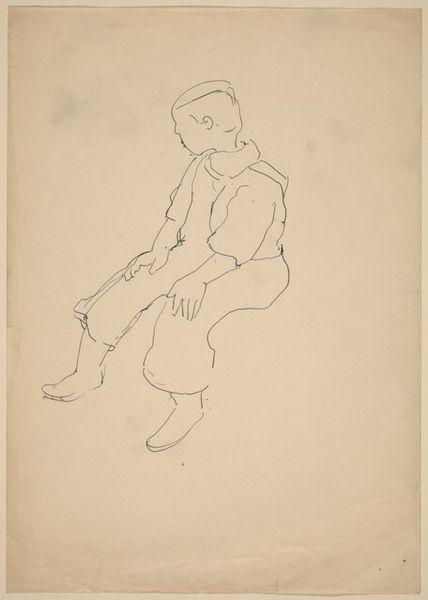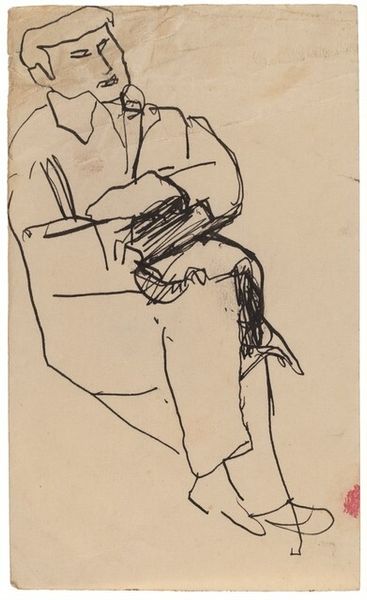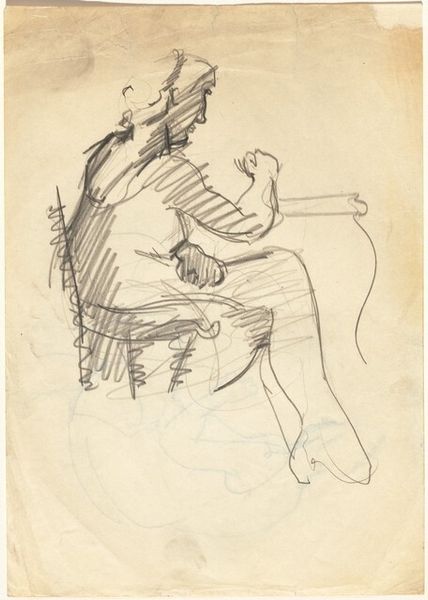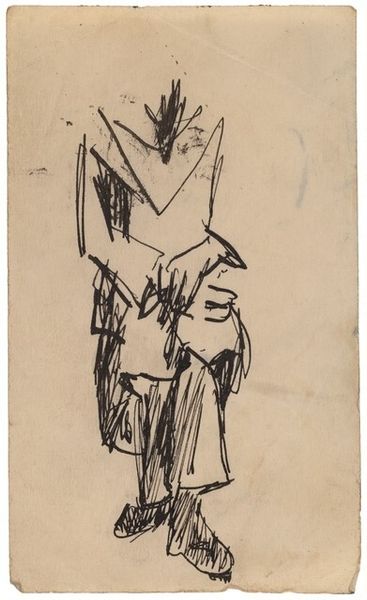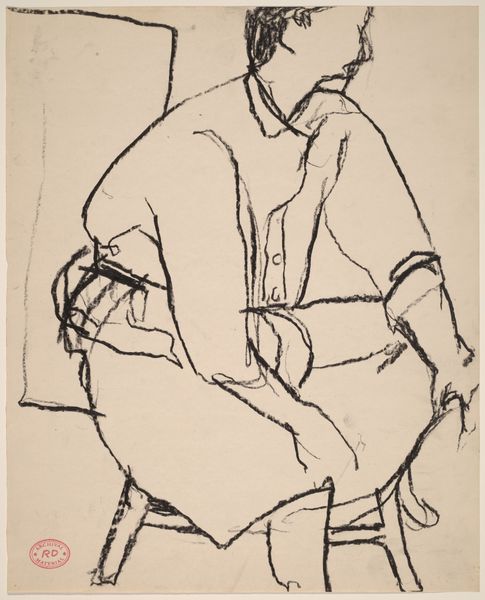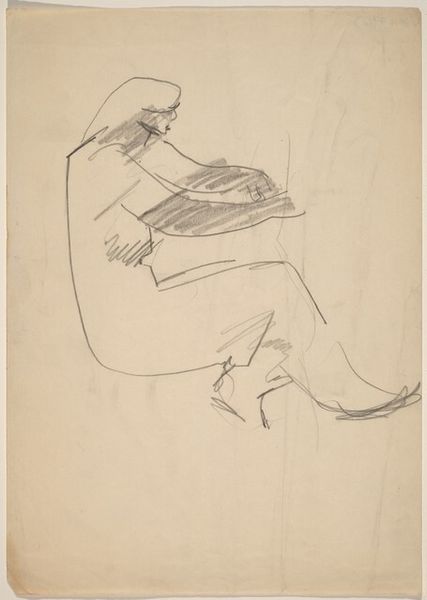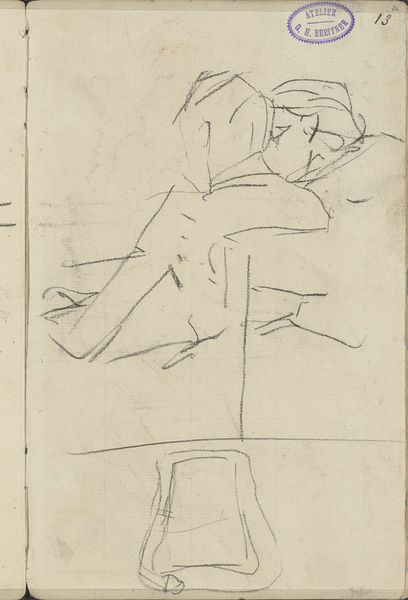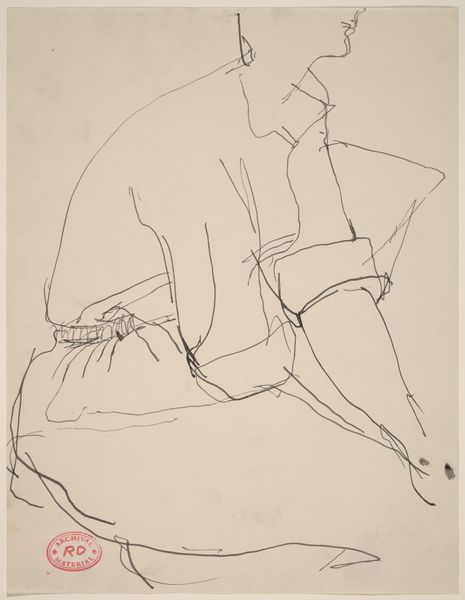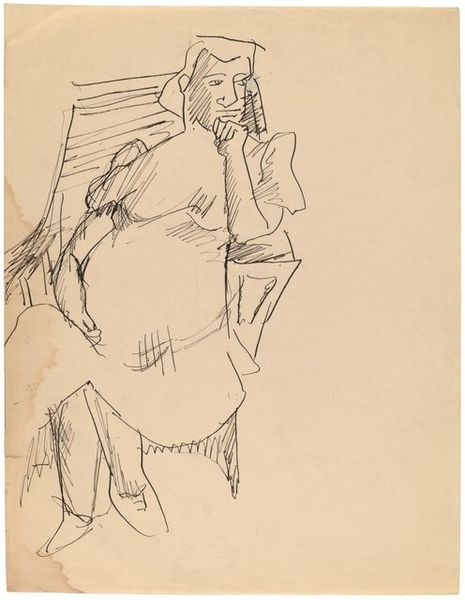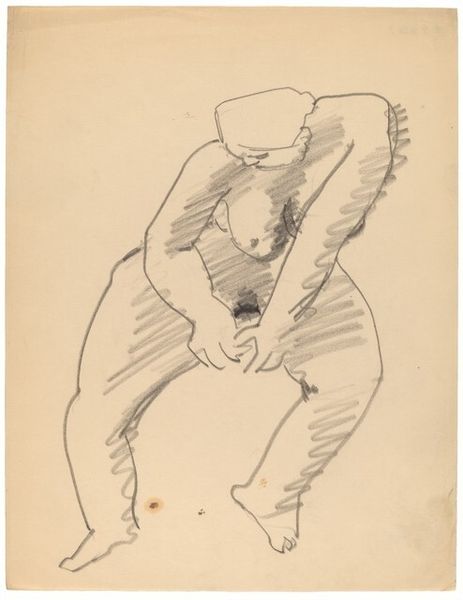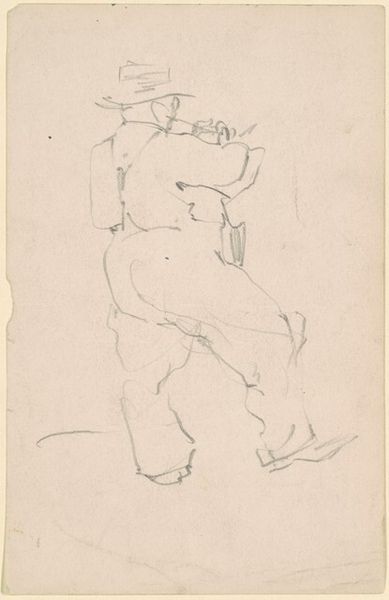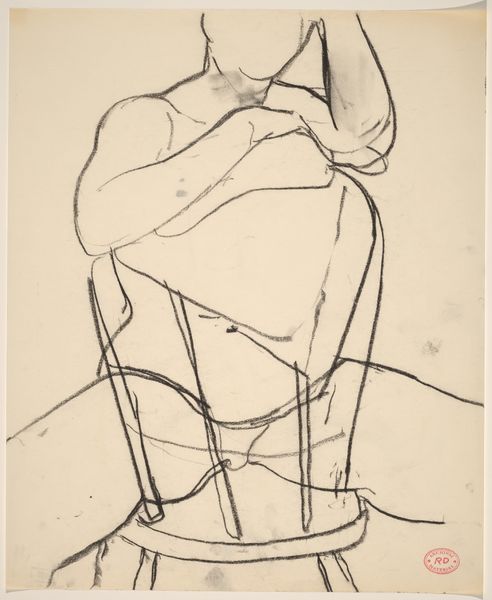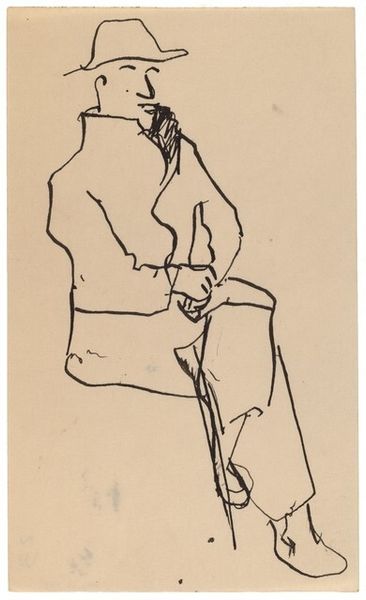
drawing, ink
#
portrait
#
drawing
#
ink drawing
#
figuration
#
ink
#
line
#
academic-art
Dimensions: overall: 27.8 x 21.5 cm (10 15/16 x 8 7/16 in.)
Copyright: National Gallery of Art: CC0 1.0
Editor: So this is "Seated Boy in Armchair, Chin Resting on Right Hand," an ink drawing by Mark Rothko. There's something about the pose, the sort of slumped posture, that makes me feel a certain melancholy. How do you interpret this work? Curator: The slouched posture you point out carries so much weight, doesn't it? Observe how Rothko uses the armchair - almost thrones - which traditionally signifies authority, wealth, a certain social status. Then he contrasts it so sharply with the figure’s defeated posture, drawing focus to a psychological space. What does that juxtaposition suggest to you? Editor: Maybe the weight of expectations, or a disconnect between outward appearances and inner feelings? Curator: Precisely. Consider the recurring motif of hands in art – they signify action, creation, power. But here, the hand props the head, an action suggesting introspection, weariness, possibly even boredom. It is evocative, yes? The continuous line gives the figure an almost ethereal or transparent appearance. Could Rothko be suggesting the fleeting nature of youth, a transition into adulthood? Editor: I never thought about the single line creating such an effect, the temporality... I was too caught up in just seeing the lines! Curator: Rothko understood the power of suggestion through simplicity. The lack of detail invites the viewer to project their own experiences and feelings onto the figure. He masterfully uses symbolic language to stir emotions. Ultimately, he lets the viewer actively engage in creating a narrative for the boy, or recognize a reflection of themselves in the art. Editor: It’s amazing how much meaning can be packed into such a simple image. I see this work in a completely different light now. Curator: Indeed. Symbols operate beyond the visual, impacting us at an emotional, and subconscious level. That interplay continues long after we leave the work itself.
Comments
No comments
Be the first to comment and join the conversation on the ultimate creative platform.
